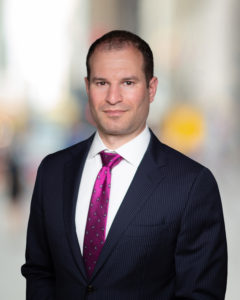raiyon (formerly known as DALL-E mini) is an AI-powered art model that draws collages of images based on, literally, “any prompt” entered by a user. The model’s developers have explained that it was “trained by looking at millions of images from the internet with their associated captions” and that “[o]ver time, it learns how to draw an image from a text prompt.” The model has become widely popular, and it appears that hundreds of its extremely weird creations are posted on Twitter alone every hour.
I took the model for a spin and input the prompt “fish noodle,” which resulted in a collage of nine images of various types of fish filets superimposed on bowls of ramen (spicy miso branzino, anyone?). Just to name a few, more creative users have recently come up with “Fisher Price guillotine” (looks . . . not effective), “man yelling at a toast” (an apparent white collar professional screaming at various potions in wine glasses), and “Gollum at a beach party” (so precious!).
Obviously, there are limitless possibilities to what the Craiyon/DALL-E model can generate, and the prospects for art, creativity, and beyond are exciting.
Also, the legal problems are potentially substantial.
For example, what happens if a user’s prompt causes the model to create a drawing that looks substantially similar or virtually identical to someone else’s copyrighted work, such as a painting or photo? That is not difficult to foresee, since while Craiyon’s creators state that is capable of “creat[ing] unique images that don’t exist such as ‘the Eiffel tower is landing on the moon,’” it was nevertheless trained on a dataset of millions of pre-existing images and has learned to create “similar images.”
This could potentially lead to copyright suits asserting, inter alia, unlawful creation of derivative works (based on the underlying works used to train the model). This may be especially likely if a Craiyon drawing closely resembles a notable photo of a celebrity, at least some creators of which are notoriously litigious. Copyright defendants might attempt to assert, inter alia, fair use or de minimis use – though the success of any such arguments will greatly depend on the particular drawing and context. If Craiyon and its developers are named in litigation, they might argue that they have not acted volitionally and that any infringement was caused by a user prompt rather than the model. See, e.g., BWP Media USA Inc. v. Polyvore, Inc., 922 F.3d 42, 51 (2d Cir. 2019); Perfect 10, Inc. v. Giganews, Inc., 847 F.3d 657, 667 (9th Cir. 2017). Ultimately, copyright cases should largely turn on how closely a Craiyon drawing resembles an underlying copyrighted image from its training dataset.
Another potentially sketchy issue is licensing. What if a company wants to use a Craiyon drawing in its marketing, musicians want to use them as album covers, or studios want to include them in TV or movies? Craiyon states that users can freely use its drawings “for personal use, whether you want to share them with your friends or print on a T-shirt,” but to contact Craiyon before commercial use. That of course begs the questions of what constitutes commercial use – perhaps you can make a T-shirt but not sell it or wear it in a movie – and how any such disagreements with Craiyon would be resolved. In any event, a license from Craiyon would be of little value in a lawsuit brought by the third-party creator of an underlying image resembled in a drawing, whether it is a litigious photographer, artist, or someone else.
Finally, there is the *slightly* important question of whether the Craiyon model itself could be considered the author and copyright owner of the drawings it creates. As of now, the answer seems to be no. Rather, based on current law, the user who input the prompt might be deemed the author – like a person clicking a camera shutter – or perhaps Craiyon’s developers could assert authorship. However, like AI itself, this area of the law is swiftly evolving.
Ultimately, there are few answers as of now. Perhaps best illustrating the myriad potential legal problems, on the community forum for Craiyon’s predecessor DALL-E mini, user “JackFruit7” recently asked: “Who owns the copyright to images produced by the dalle-mini demo? Can I sell images produced by the huggingface dalle-mini demo using my own original text prompts?” The community answers were . . . not encouraging. They notably included “I’ve uploaded some results to facebook and so has my friend.” But the truth is that even attorneys will not have clear answers until litigation begins in earnest – so stay tuned.
Filed in: Art Law, Photography, & Design, Digital Media, IP/Internet Transactions, Legal Blog, Software / Apps
June 27, 2022
